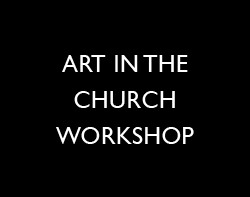In this installment of giving thanks through art, I’d like to suggest a way in which art facilitates the act of thanksgiving between people, thus furthering the development of the community and the individual. Thus follows an examination of how graphic design helps us to give thanks, focusing specifically on the humble thank you note.
The practice of thank you notes extends far back into our human history. From the ancient Chinese and Egyptian cultures who used papyrus slips for their messages to fifteenth-century Europe when the practice of writing and hand-delivering notes developed, thank you notes have been an active means of social interaction and exchange. [1] “A personal, handwritten, thank-you note is the finest form of expressing gratitude,” [2] and there are many websites that describe how to properly express one’s gratitude in a note. [3]
Thank you notes are a mainstay for any graphic designer working for a greeting card company as well as being a popular genre for children’s arts and crafts. Arguably one could say that what is written inside is more important than what the card looks like. However, I’d like to explore that what the humble thank you note offers to the one who writes, the one who receives, and the one who creates.
1. Thank you notes cultivate thankfulness within the character of the person writing.
At its basic, thank you notes exist as a stationary function that facilitates a recipient of something to express their gratitude; perhaps a means by which a social expectation is fulfilled. However, regardless of the means for which the note is written, it serves by providing a moment in time when the one who has received can reflect on both what they’ve been given and who has gifted them. Thank you notes become almost sacramental in their function, leading the writer into greater discipline of cultivating their own grateful heart as well as providing an opportunity for reflection on God’s own goodness to that person, both by the thing received and the one who provided. One thinks of Paul’s comment to the Philippians when he says: ‘I thank my God in all my remembrance of you.’ Thank you notes, while they sit within a cultural convention, could be an act of spiritual discipline.
2. Thank you notes are objects of remembrance.
If thank you notes cultivate thankfulness in the character of the writer, they also serve as a object of remembrance for the one who receives. The thank you note reminds the receiver of several things but perhaps most significantly it can imaginatively re-inact that moment that necessitated the thank you note, further deepening the relationship between sender and receiver long after the moment has passed. The thank you note carves out a moment in time and until it is thrown away, it continues to serve its purpose of giving thanks.
3. Thank you notes reveal the abundance of beauty found in the everyday object.
Before concluding this post, I want to consider how the creator of the thank you note gives thanks in the act of creation. A commercial designer might be churning out multiple versions of a similar design; however, at some point, reflections on what a ‘thank you’ is (or is not) will have guided direction as to what ended up in the final design. And while I don’t think that all designers create with reflection at the forefront of their mind, the act of creating to facilitate someone else’s act of thanksgiving is a moment ripe for consideration of what thanks looks like. When the designer alights on the right look for the right situation, the beauty in this everyday object deepens the fullness of the experience for both receiver and giver.
What do you think ‘thank you’ looks like?
—
[1] The History of Thank You Notes[2] Ibid.
[3] How to Write a Thank-You Note





What a creative response to the idea of thanksgiving through the arts!
What do you think would make a bad or failed thankyou note/card design? I am just wondering whether it is only in writing the contents of a card that a thankyou card fulfils its purpose. Is it ultimately a collaborative effort between the designer the the consumer who passes the card on?
Thanks, Anna!
There are definitely failed thank you note designs… but I think that most of them can be redeemed by what’s written inside. And I would imagine that ‘failure’ on the design front is dependent upon the taste of the one who receives the card since different people have different preferences. I can sit from the outside and offer a more objective analysis of whether the card fulfills principles of ‘good design’ but because thank you notes are so bound up in the relationship it points to, I think this could be a case where the failure comes either from the card in some way obscuring the ability for the thanks to be offered/received or a lack of sincerity on the part of the one who writes. I suppose that the best collaboration could be when the writer creates a thank you note especially for the one who receives — I think that collaboration you queried is so many steps removed that success would be hard to determine.
The Gift of Thanks: The roots, persistence,
and paradoxical meanings of a social ritual
http://www.margaretvisser.com/ you might find this an interesting read on the history of Giving Thanks.
Thanks, Suzanne, for the link!